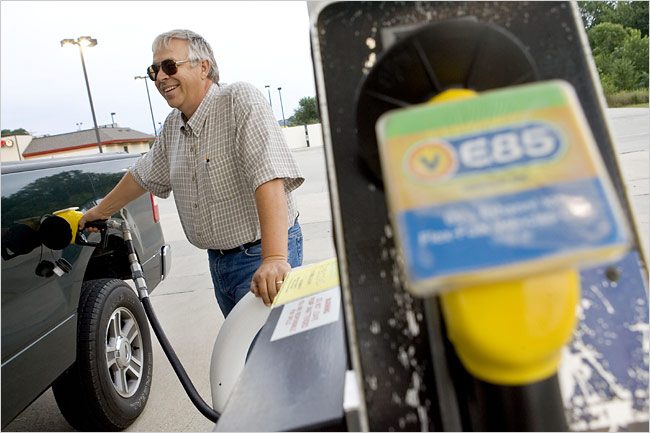It’s fairly well established that, in terms of sustainability, attitudes far surpass actions. According to Gallup polls, at least 2/3 of respondents have consistently responded to questions about their concern for the environment by saying that they would describe themselves as fairly green. This trend has been consistent for decades.
But action is not always in line with attitude. Many programs designed to encourage what many would think are “no brainer” sustainable behavior, like installing a high efficiency showerhead, fail to achieve significant adoption rates.
Doug McKenzie Mohr, environmental psychiatrist, and author of Fostering Sustainable Behavior, suggests the answer is Community Based Social Marketing (CBSM). CBSM proceeds in 5 steps:
- Selecting behaviors you want to change
- Uncovering barriers & benefits
- Developing strategies
- Piloting the strategy
- Implement broadly and evaluate
Step 1: Selecting Behaviors
The first step in creating change is to select behaviors that you’d like to see changed. But rather than officials simply saying they’d like to see one particular behavior or another change, it’s better, according to McKenzie Mohr, to prioritize community programs and choose behaviors that will have the biggest effect. To do this, it’s critical to start with the broader scale data.
There are several important factors in selecting behaviors. One is that they’re non-divisible. So saying something like “we want to encourage people to plant native plants” is simply too general. There are too many types of native plants, some of which might actually be more water-thirsty than others. So any behavior needs to be drilled down as far as possible.
The second factor is to focus on the “end state”. Thus, a program where a municipality hands out energy efficient light bulbs will be less effective than a program where that municipality makes people bring in 10 incandescent bulbs to receive their replacement bulbs. In essence, the action has been taken, and “end state” achieved. And lastly, and perhaps most difficult, is not to use “strategies”. A strategy would be “we want people to take shorter showers.” Nice, but ineffective compared to end-state focused, non-divisible outcomes like “we want 75% of residents to change to a high efficiency showerhead”.
The next thing to consider in terms of selecting behaviors is how rigorous the selection criteria.
The selection criteria include three elements:
|
More rigorous (better) |
Less rigorous (less effective) |
|
|
BIGGEST IMPACT |
Technical Review: What do the data say? What are the biggest areas needing improvement? |
Survey experts: asking government officials, utility representatives, and other experts and summing their feedback. |
|
HIGHEST PROBABILITY |
Review Cases: What has worked elsewhere? Case studies, in as much detail as possible. |
Survey audience: Ask the target population what they think would work. |
|
LOWEST PENETRATION |
Inspections: Look at buildings, do assessments of how many of the desired change have been made. |
Survey audience: Ask people what they’ve done. |
To identify the biggest impact areas, a strong approach is to look at the data. In Canada, Mohr said, 59% of electricity is used for heating space. So much attention is paid to lights, but when researchers looked at the data in Canada, only 5% of the total energy used was being used for lights. So any programs aimed at lights can only change a few percent overall, whereas programs aimed at heating can have a much bigger impact. In Hawaii, clearly this would be quite different, so programs designed without this data review are bound to be less effective.
A weaker approach is to survey experts. You can find a lot of folks willing to give you input, but the data will be suspect to each person’s inherent biases and backgrounds. Good data, but definitely not the strongest approach.
To identify the changes with the highest probability of adoption, a strong approach is to look at case studies. What has worked elsewhere? How did those changes come about? A weaker approach is to survey people and ask them how many of them, for instance, would give up driving by themselves in favor of taking public transit. McKenzie Mohr’s website, www.cbsm.com, has many case studies from around the world on any number of initiatives.
To identify the best possible overall outcome, you’ll want to find areas with low penetration. Figure it this way. If 75% of people have already installed a high efficiency showerhead, you can only penetrate the market 25% more (and to be honest, those 25% are likely going to come around eventually anyway, since everyone else is doing it).
Next Page (2 of 3), Step 2: Uncovering Barriers and Benefits to Social Change (step 2 of 5).



